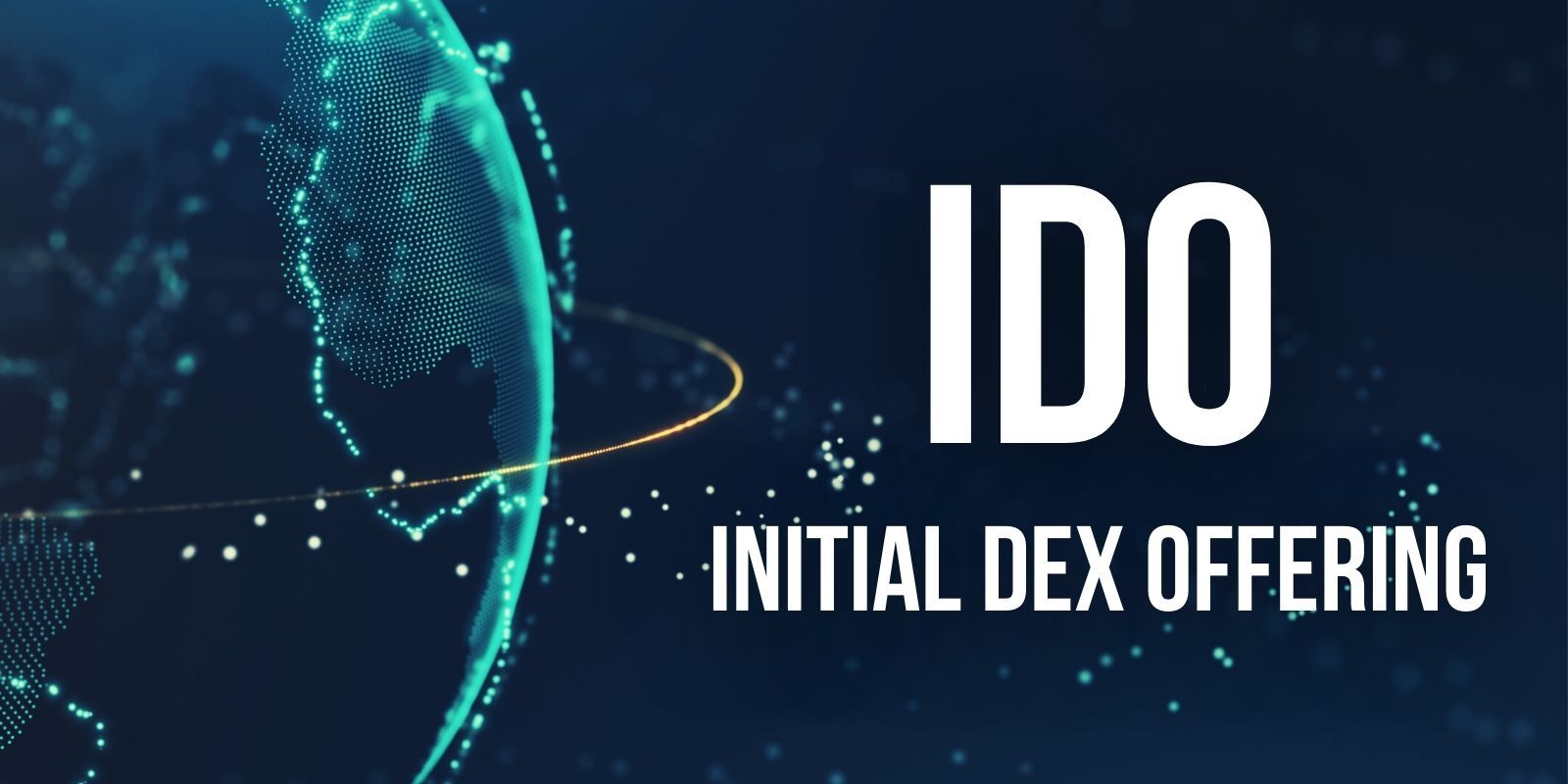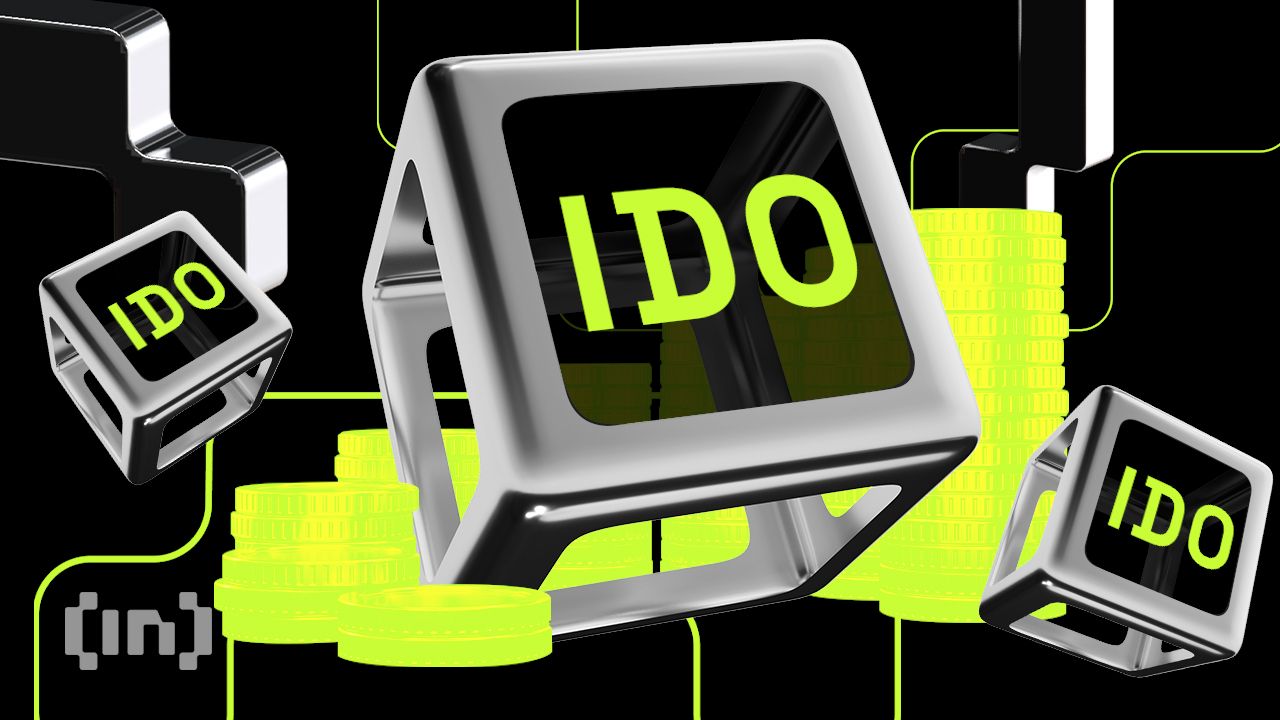Understanding the Concept of Initial DEX Offering IDO

In the rapidly evolving landscape of blockchain technology, innovative mechanisms for raising capital are gaining traction. These approaches are designed to empower projects and ensure broader participation among investors, enabling them to become integral parts of the ecosystem. As traditional methods struggle to keep pace with the demands of a dynamic market, new strategies are emerging that prioritize transparency and inclusiveness.
Empowered by advances in smart contracts, these modern frameworks allow for seamless interactions between creators and supporters, fostering a sense of community and shared purpose. By eliminating intermediaries and streamlining processes, participants can engage directly with promising ventures, thus enhancing the overall experience. The emphasis is placed not only on the funding aspect but also on building lasting relationships within the blockchain space.
As these alternatives continue to gain popularity and sophistication, it becomes essential for enthusiasts and investors alike to grasp their nuances. Understanding the mechanics behind these systems will equip individuals with the knowledge necessary to navigate this burgeoning field effectively. With each advancement, the landscape becomes more vibrant, filled with opportunities that challenge conventional wisdom and redefine the investment paradigm.
The Rise of DEX in Cryptocurrency
The emergence of trading platforms that operate without intermediaries has significantly transformed the landscape of digital assets. These platforms empower users by facilitating direct transactions and enhancing control over their investments. The shift towards a more autonomous approach to asset exchange reflects a growing desire for transparency and security among participants in the crypto market.

Innovation is at the heart of this transformation, allowing projects to flourish in an environment that prioritizes user-centric solutions. By enabling participants to engage with one another directly, these platforms reduce reliance on traditional systems, which often come with various obstacles and limitations. As a result, many users are drawn to the benefits of peer-to-peer interactions and the efficiency they offer.
Moreover, the scalability of these systems has garnered attention, as they can accommodate a broad range of tokens without the constraints of typical centralized exchanges. This flexibility not only fosters a diverse marketplace but also encourages new projects to emerge, each contributing to the overall richness of the ecosystem. Such a fertile ground for innovation invites further advancements, paving the way for an evolving and dynamic digital economy.
As the community continues to embrace this novel approach, the shift towards platforms that prioritize accessibility and inclusivity is unmistakable. Users are increasingly recognizing the advantages of participating in an environment where trust and collaboration take precedence over traditional gatekeeping models. This paradigm shift may very well define the trajectory of crypto exchanges in the coming years.
What Are Initial DEX Offerings?
In the realm of cryptocurrency, a new mechanism has emerged to support project development and connectivity with investors. This approach facilitates seamless investment opportunities by leveraging automated exchanges to allow participants to engage directly with fresh ventures. By utilizing this innovative framework, projects can reach potential backers without the hurdles often associated with traditional funding methods.
Key Features of This Mechanism
One of the primary characteristics of this approach is its accessibility. Participants can often contribute with minimal barriers, enabling a wider audience to get involved. Additionally, the transparent nature of transactions ensures that all activities are verifiable on the blockchain. This not only builds trust among supporters but also enhances the credibility of projects seeking capital.
Advantages for Projects and Investors
For creators, this method opens doors to a diverse pool of capital while ensuring that they maintain control over their initiatives. For contributors, it presents unique opportunities to invest in potential high-growth projects at an early stage. As the ecosystem continues to evolve, the collaboration between innovators and supporters promises to reshape the landscape of project financing.
Advantages of Participating in IDOs
Engaging in the early-stage investment opportunities provided by new blockchain projects presents a range of benefits for investors. These unique fundraising mechanisms allow individuals to support innovative initiatives while potentially reaping significant financial rewards. Below are some key advantages of being involved in such ventures.
Access to New Projects
- Investors have the opportunity to discover and support groundbreaking ventures in the crypto space.
- Participating helps in identifying trends and technologies before they become mainstream.
- Early access can lead to acquiring tokens at lower prices before they hit major exchanges.
Potential for High Returns
- Investors can benefit from substantial price appreciation as projects gain traction and popularity.
- Historical data shows that many early participants in such funding platforms have seen significant capital gains.
- High volatility in the market can lead to quick profits for savvy investors.
In summary, getting involved in these investment opportunities allows individuals to explore innovative projects while leveraging the potential for impressive returns on their investment. As the landscape of funding continues to evolve, these platforms represent a promising frontier for those looking to expand their portfolios.
Risks and Challenges for Investors
Participation in emerging investment opportunities can be enticing, yet it comes with its share of uncertainties and hurdles. Investors must navigate various pitfalls that may arise during the process, impacting their potential returns and overall experience.
Market Volatility: One of the primary concerns is the inherent volatility commonly associated with digital assets. Prices can fluctuate drastically within short periods, leading to significant losses if one is not prepared for rapid changes.

Regulatory Uncertainty: Another challenge lies in the evolving legal frameworks surrounding digital investments. Regulations can change unexpectedly, potentially affecting project viability and investor protections.
Project Credibility: Evaluating the legitimacy of projects can be daunting. Not all initiatives are created equal, and distinguishing between credible ventures and those that may be fraudulent or lack substance is crucial to safeguarding one’s investments.
Liquidity Issues: Even if a project performs well, there may be challenges related to liquidity. This can hinder an investor’s ability to sell their assets quickly, leading to problems if funds are needed on short notice.
Technological Risks: The underlying technology carries its own set of vulnerabilities. Security breaches, smart contract flaws, or platform failures can jeopardize investments and result in unrecoverable losses.
Investors must conduct thorough due diligence and remain informed about these factors to navigate the intricate landscape successfully. Balancing the potential rewards against the risks involved is key to making sound investment decisions.
Comparing IDOs with Other Fundraising Methods
In the rapidly evolving landscape of capital acquisition, various techniques have emerged, each offering unique benefits and challenges. This section will delve into how modern token distribution models stand in relation to traditional avenues such as venture capital, crowdfunding, and initial public offerings. By analyzing these approaches, we can better comprehend the distinct advantages and limitations presented by token-based capital raises.
Traditional Fundraising Avenues
- Venture Capital: This method typically involves large investments from sophisticated investors who seek significant equity stakes and often control in the companies they support.
- Crowdfunding: A popular avenue where small amounts of money are raised from a large number of individuals, often facilitated by online platforms. This method allows for community engagement but can result in limited funding for more extensive projects.
- Initial Public Offerings (IPOs): This process enables private companies to become publicly traded by selling shares to the public. While it provides substantial capital, it also demands strict regulatory compliance and exposes the company to broader market fluctuations.
Token Distribution Models
In contrast to the aforementioned methods, modern distributions provide additional layers of accessibility and transparency.
- Lower Entry Barriers: These methods often allow smaller investments, making them more accessible to a broader spectrum of contributors.
- Speed of Execution: Capital can be raised swiftly, often within days, thanks to streamlined digital processes, compared to the prolonged timelines of traditional methods.
- Global Reach: Organizations can tap into an international audience without geographical limitations, unlike conventional funding approaches.
While each method has its merits and drawbacks, understanding these differences equips potential project leaders and contributors with the knowledge to choose the most suitable route for their objectives. In the realm of capital acquisition, flexibility and innovation remain at the forefront of decision-making processes.
The Future Landscape of Decentralized Finance
The evolving realm of finance is witnessing a significant transformation driven by innovative technologies and new paradigms. As traditional systems grapple with inefficiencies, a growing number of individuals and enterprises are embracing a model that fosters transparency, inclusivity, and accessibility. This shift heralds a new era where participants can engage in financial activities without relying on conventional intermediaries.
Emergence of new platforms is reshaping how assets are traded and managed. With the rise of novel mechanisms, participants are increasingly empowered to control their investments and engage in peer-to-peer transactions. These platforms eliminate barriers to entry, allowing a wider demographic to participate in the economic ecosystem.
As this landscape develops, regulatory frameworks are expected to adapt, creating a more secure environment for users. This balance between innovation and oversight will pave the way for sustainable growth and mainstream adoption, fostering trust among participants who seek greater autonomy over their financial activities.
The ongoing evolution signifies a paradigm shift where financial services become more community-oriented and democratized. By leveraging the power of blockchain technology, individuals can anticipate a more equitable distribution of wealth and opportunities, redefining the essence of financial interactions.

Q&A: Initial dex offering IDO
What exactly is an Initial DEX Offering (IDO) and how does it differ from traditional fundraising methods?
An Initial DEX Offering (IDO) is a fundraising mechanism utilized by blockchain projects to raise capital through decentralized exchanges (DEXs). In an IDO, a project team releases its tokens to the public via a DEX platform, allowing investors to purchase tokens directly, typically with stablecoins or cryptocurrencies. Unlike traditional Initial Coin Offerings (ICOs), where tokens are often sold through centralized platforms, IDOs provide a more decentralized approach that mitigates issues related to centralization and gives immediate liquidity. This differs from traditional fundraising methods like IPOs, where companies sell shares to investors for future profits, while IDOs focus on token utility within a blockchain ecosystem.
What are the benefits of participating in an IDO for investors?
Participating in an IDO offers several benefits for investors. Firstly, IDOs often provide early access to new tokens, which can appreciate in value if the project succeeds. Secondly, they typically come with lower entry barriers compared to traditional fundraising methods, allowing more retail investors to participate. Furthermore, IDOs are usually accompanied by smart contracts that ensure transparency and security, as transactions are recorded on the blockchain. Additionally, during an IDO, tokens are often sold at a lower price compared to their future market value, potentially leading to significant returns once the token is traded on decentralized exchanges.
What risks should investors be aware of when participating in an IDO?
Investors should be cautious and aware of several risks when participating in an IDO. Firstly, the space is rife with speculative projects, and not all projects will succeed. This means there is a significant risk of token loss if the project fails to deliver on its promises. Secondly, IDOs often lack regulatory oversight, which can lead to potential scams or untrustworthy projects. It is essential for investors to conduct thorough research before participating. Moreover, liquidity can sometimes be a concern; while IDOs aim for liquidity, being able to sell tokens at a fair price can be challenging in low trading volume scenarios. Finally, the volatility of cryptocurrency markets can lead to abrupt price fluctuations, resulting in financial losses.
How do investors typically participate in an Initial DEX Offering?
Investors can participate in an Initial DEX Offering (IDO) by following a few straightforward steps. First, they need to have a compatible cryptocurrency wallet that supports the token being offered and sufficient funds in cryptocurrency (such as ETH or BNB) to purchase the tokens. Next, they should track upcoming IDOs through platforms that frequently list them, such as DEX aggregators or IDO-specific launchpads. Once an IDO is announced, investors need to check the specific requirements, which may include whitelisting, KYC (Know Your Customer) verification, or simply holding a particular token in their wallet. After that, during the IDO date, they can execute their purchase on the designated DEX by exchanging their cryptocurrency for the new tokens, usually by approving the transaction on their wallet interface and confirming the gas fees. Finally, investors should monitor their holdings post-IDO to make informed decisions regarding trading or holding their tokens.
What is the difference between Initial Exchange Offerings (IEOs) and Initial DEX Offerings (IDOs)?
IEOs and IDOs are both fundraising models for crypto projects, but they operate differently. IEOs are conducted on centralized exchanges and require projects to list their tokens through an exchange’s platform, offering a certain level of trust and security. IDOs, on the other hand, operate on decentralized exchanges (DEX), allowing projects to launch tokens directly to the public without a centralized intermediary. IDOs offer immediate liquidity, unlike traditional fundraising models, and provide projects with immediate token liquidity after the sale.
How do IDOs work on decentralized exchanges (DEX)?
IDOs (Initial DEX Offerings) are fundraising events where crypto projects launch their tokens on decentralized liquidity exchanges like Uniswap or Sushiswap. These offerings allow investors to buy tokens directly from a decentralized liquidity pool. Unlike ICOs, IDOs provide immediate liquidity by listing the token on the DEX soon after the sale goes live. This decentralized method eliminates the need for a waiting period or centralized intermediaries, offering immediate access to tokens and liquidity for both the project and investors.
Why are IDOs considered a new and attractive fundraising model in the crypto space?
IDOs are an attractive fundraising model because they operate on decentralized platforms, allowing crypto projects to raise funds quickly without relying on traditional fundraising methods. This decentralized liquidity exchange ensures immediate token liquidity after the sale. Furthermore, IDOs typically eliminate the need for a waiting period, providing immediate access to tokens once the offering goes live. This model allows investors to participate directly in a crypto project’s launch, making it an innovative alternative to ICOs and IEOs.
What are the key benefits of launching a project through an IDO rather than an ICO?
Launching through an IDO offers several key benefits compared to traditional ICOs. One of the main advantages is that IDOs are conducted on decentralized liquidity exchanges, which provide immediate liquidity to the token right after the sale. Unlike ICOs, which require a longer waiting period and rely on centralized platforms, IDOs enable a more decentralized and transparent fundraising model. Additionally, IDOs allow projects to reach a wider audience in the crypto industry, as they operate on decentralized platforms like Uniswap and Sushiswap, where crypto enthusiasts can directly engage.
How does an IDO provide immediate liquidity for a crypto project?
An IDO provides immediate liquidity through its operation on decentralized exchanges (DEX). As soon as the IDO goes live, the token is listed on a DEX, allowing it to be traded instantly. This process eliminates the need for a waiting period, offering both the project and investors immediate token liquidity. By using decentralized liquidity pools, IDOs ensure that tokens can be bought, sold, and swapped without the delays often associated with traditional fundraising methods like ICOs or IEOs.


